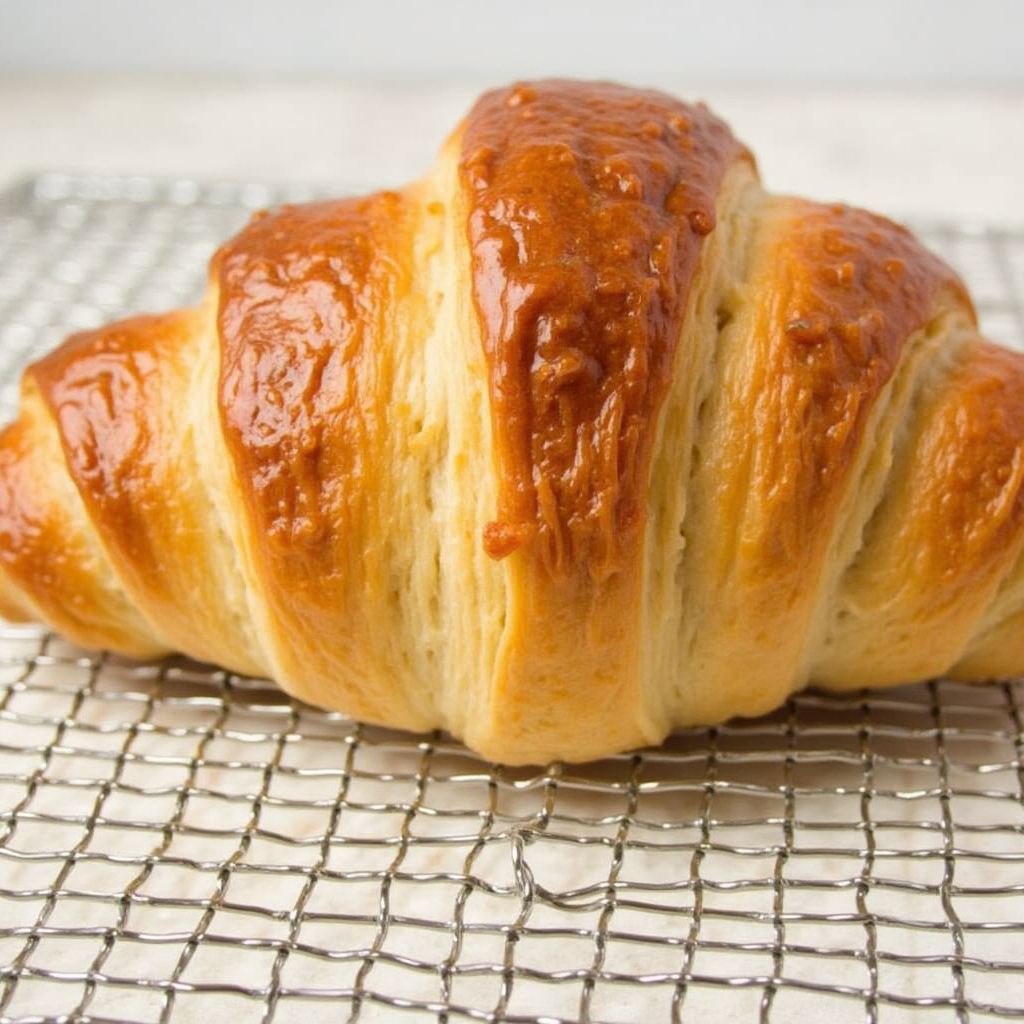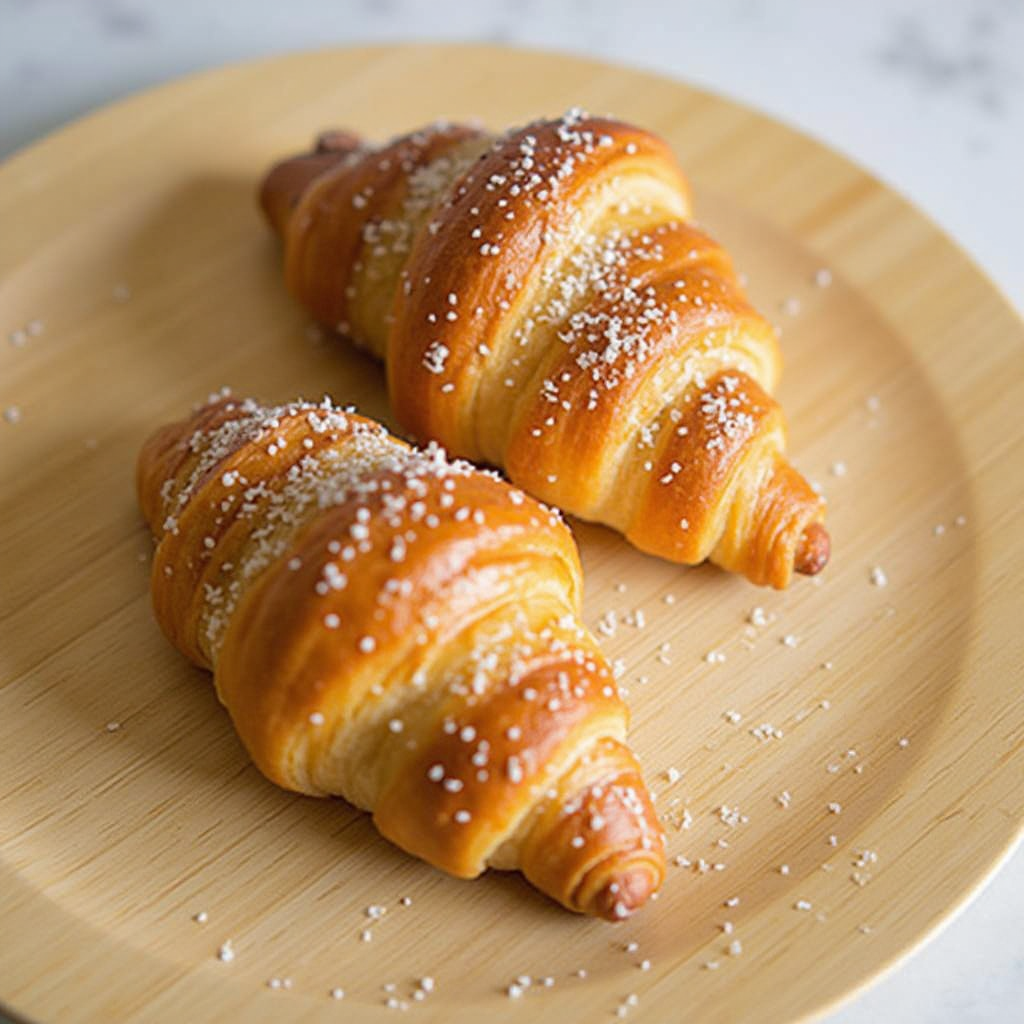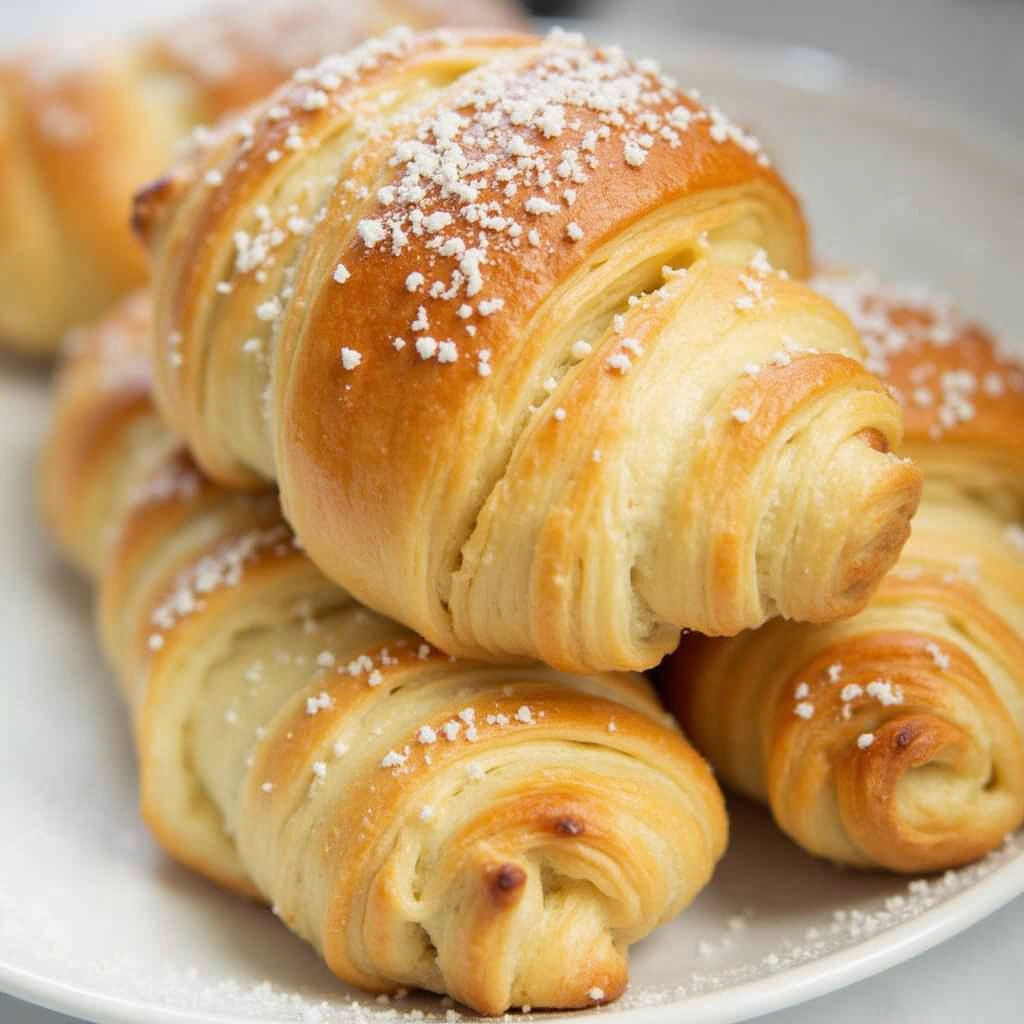Introduction
Croissants are the epitome of French pastry perfection flaky, buttery, and irresistibly delicious. However, for those who follow a gluten-free diet, enjoying a classic croissant can be challenging. The good news is that gluten-free croissants are possible, and they can be just as light, airy, and indulgent as their traditional counterparts.
In this guide, we will cover everything you need to know about making gluten-free croissants from scratch. From choosing the right flour to mastering the lamination process, this comprehensive article will help you create the perfect gluten-free croissant at home.
Gluten-Free Croissant Recipe
If you’re craving a flaky, buttery croissant but need to stick to a gluten-free diet, you’re in for a treat! These gluten-free croissants are just as delicious as their traditional counterparts, and they’re made with simple ingredients you can find in most grocery stores. Whether you’re baking for yourself or for guests with dietary restrictions, this recipe will surely impress!
For the perfect gluten-free croissants, you’ll need the best flour blend. We recommend using Bob’s Red Mill Gluten-Free 1-to-1 Baking Flour, which gives you the right texture for tender, flaky pastry. You can also explore Gluten-Free on a Shoestring for more tips on how to master gluten-free baking at home.
When it comes to the nutrition of your croissants, understanding the ingredients is key. For detailed information on the nutritional values of gluten-free ingredients like almond flour, check out USDA Nutritional Information.
For more gluten-free recipe ideas, be sure to explore RecipesJessy.com. Our site is packed with easy-to-follow recipes, including other gluten-free treats that will leave you satisfied.
What is a Gluten-Free Croissant?
A gluten-free croissant is a pastry made without wheat, barley, or rye, which are the primary sources of gluten. Traditional croissants rely on gluten for their structure, elasticity, and flakiness. The challenge of making a gluten-free croissant is recreating that same texture without gluten. With the right combination of ingredients and techniques, you can achieve a delicious and authentic result.
Key Characteristics of a Perfect Gluten-Free Croissant:
- Flaky Layers: Achieved through proper lamination with butter.
- Airy and Soft Interior: Requires a blend of gluten-free flours and xanthan gum.
- Buttery and Rich Flavor: High-quality butter enhances the overall taste.
- Golden, Crispy Exterior: The right oven temperature and egg wash contribute to the beautiful golden crust.

Essential Ingredients for Gluten-Free Croissants
Gluten-Free Flour Blend
Since gluten is responsible for the elasticity and strength in dough, a gluten-free flour blend is essential for creating croissants that hold their shape while remaining soft inside.
Best Gluten-Free Flours for Croissants:
- Rice Flour: Provides a neutral flavor and light texture.
- Tapioca Flour: Adds elasticity and chewiness.
- Sorghum Flour: Offers a mild, nutty taste and helps with structure.
- Almond Flour: Adds a rich flavor and contributes to moisture.
- Cornstarch or Potato Starch: Helps to create a lighter, airy texture.
Binders and Stabilizers:
- Xanthan Gum or Psyllium Husk: Essential for replacing the elasticity lost from gluten.
- Eggs: Act as a binding agent and contribute to richness.
Butter
High-quality, European-style butter with at least 82% fat content is recommended. It plays a crucial role in the lamination process, ensuring that the croissants develop flaky layers.
Yeast
A good gluten-free active dry yeast or instant yeast is necessary for achieving a proper rise and fluffy interior.
Sugar and Salt
- Granulated sugar adds a slight sweetness and helps activate the yeast.
- Salt enhances the overall flavor of the croissants.
Milk
Warm whole milk or a dairy-free alternative like almond or oat milk can be used to hydrate the dough.
Egg Wash
A mixture of egg yolk and milk creates a golden, shiny crust.

Step-by-Step Guide to Making Gluten-Free Croissants
1: Preparing the Dough
- Mix Dry Ingredients: In a large bowl, whisk together the gluten-free flour blend, sugar, salt, and xanthan gum.
- Activate the Yeast: Dissolve the yeast in warm milk with a teaspoon of sugar. Let it sit for 5-10 minutes until frothy.
- Combine Wet and Dry Ingredients: Gradually mix the yeast mixture into the dry ingredients. Add softened butter and eggs. Mix until a soft, sticky dough forms.
- Chill the Dough: Cover the dough with plastic wrap and refrigerate for at least 2 hours or overnight.
2: Laminating the Dough
- Prepare the Butter Block: Place cold butter between two sheets of parchment paper and roll it into a rectangle.
- Roll Out the Dough: On a floured surface, roll out the chilled dough into a larger rectangle.
- Encapsulate the Butter: Place the butter block in the center and fold the dough over it.
- Roll and Fold (Turns): Roll the dough into a long rectangle and fold it into thirds. Repeat this process 3-4 times, chilling the dough between each turn.
3: Shaping the Croissants
- Roll Out the Dough: Once the final lamination is complete, roll the dough to about ¼ inch thickness.
- Cut the Triangles: Use a knife or pizza cutter to cut triangles for croissants.
- Shape the Croissants: Roll each triangle from the base to the tip, forming a crescent shape.
- Proof the Croissants: Let them rise at room temperature for about 1.5 to 2 hours.
4: Baking
- Preheat the Oven to 375°F (190°C).
- Apply Egg Wash for a golden crust.
- Bake for 20-25 Minutes until golden brown and crispy.
Troubleshooting Common Issues
Even experienced bakers can face challenges when making gluten-free croissants. Here are some common issues and how to fix them:
- Croissants are too dense: Ensure proper proofing time and use fresh yeast.
- Dough is too sticky: Refrigerate longer and use extra flour when rolling.
- Butter leaks during baking: Make sure the dough is cold during lamination.
- Croissants don’t rise well: Ensure a warm environment for proofing and check yeast viability.
Tips for Perfect Gluten-Free Croissants
- Use Cold Butter: Ensures distinct, flaky layers.
- Chill the Dough: Prevents butter from melting during lamination.
- Handle the Dough Gently: Overworking can make it dense.
- Proof in a Warm, Humid Environment: Helps with a proper rise.
Common Mistakes to Avoid When Making Gluten-Free Croissants
- Skipping the Chilling Process: If the dough isn’t cold enough, the butter will melt, leading to dense croissants instead of flaky layers.
- Using the Wrong Flour Blend: Not all gluten-free flours are equal; ensure you’re using a blend designed for pastries.
- Overhandling the Dough: Too much handling can break down the delicate layers formed during lamination.
- Underproofing: Allow enough time for the croissants to proof; otherwise, they will be too dense.
- Baking at the Wrong Temperature: Too high can burn the croissants; too low can leave them undercooked.

Variations of Gluten-Free Croissants
1. Chocolate-Filled Gluten-Free Croissants
Add dark chocolate pieces before rolling the croissants for a decadent treat.
2. Almond Gluten-Free Croissants
Top with almond cream and sliced almonds before baking.
3. Savory Gluten-Free Croissants
Fill with cheese, herbs, or smoked salmon for a savory twist.
Storing and Freezing Gluten-Free Croissants
- Room Temperature: Store in an airtight container for up to 2 days.
- Refrigeration: Keep for up to 5 days; reheat before serving.
- Freezing: Freeze unbaked croissants and bake directly from frozen for a fresh batch anytime.
Conclusion
Mastering the gluten-free croissant may take practice, but with the right ingredients and techniques, you can achieve bakery-quality results at home. Whether you enjoy them plain, filled with chocolate, or topped with almonds, these croissants will impress any pastry lover.
Are you ready to bake your own batch? Try it out and share your experience!

